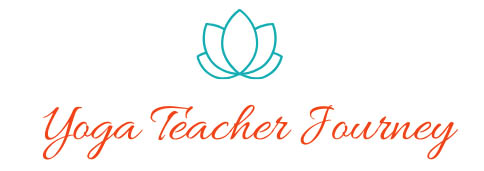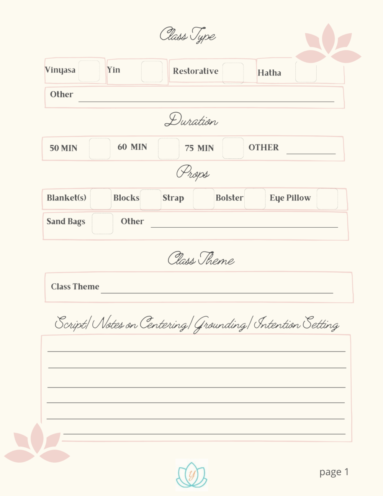I remember being intrigued by the beautiful language of Sanskrit as a yoga student, before I began teaching. There was something captivating and mysterious about hearing the names of the postures in Sanskrit as I was practicing them. Some became familiar, “Tadasana, Uttanasana, Ardha Uttanasana… ” and I would take comfort, and some pride too, in knowing how to move my body based on the Sanskrit term spoken by the teacher.
Early in my practice, my teacher used minimal Sanskrit and still I fell in love with yoga. But when I began taking classes where teachers infused Sanskrit names into the postures, it felt like the beginning of a whole new chapter in learning about yoga. Like I had been given a special key to open the door to deepening my practice. Learning Sanskrit connected me with ancient yoga tradition. It is one of the oldest languages, dating back to the Vedic period, and universally used by yogis in practice all over the world.
Sanskrit can be quite intimidating at the start of your yoga teaching journey. It takes consistent practice to feel confident you are using the right term and pronouncing it correctly. “Learning how to pronounce Sanskrit with correct breath, resonance, rhythm, and tongue position can enhance your teaching and personal practice in powerful, subtle ways” says Nicolai Bachman, E-RYT 500, who has been teaching Sanskrit since 1994 (source: https://kripalu.org/resources/why-sanskrit-matters-qa-nicolai-bachman). Nicolai also publishes 108 Sanskrit Flash Cards, and other helpful learning tools seen below.
As yoga teachers, how proficient do we need to be in correct pronunciation of Sanskrit? During my 200 hour yoga teacher training (YTT), in addition to learning the names of postures in Sanskrit, we were taught some basic Sanskrit root words, their meaning, and correct pronunciation. I really appreciate that I learned this much about the language during my initial training. The reality is, however, even from well-seasoned, advanced teachers I hear many versions of the same spoken word. It boils down to how they were taught to pronounce the terms by their teachers. Sanskrit began thousands of years ago as an oral language before it was written, leaving much room for slight shifts in pronunciation. In other words, don’t be too hard on yourself if you don’t get the pronunciation exactly right. Renowned historian and author William Cooke Taylor acknowledges that “to acquire the mastery of this language is almost a labor of a life; its literature seems exhaustless” (source: https://www.ancient.eu/Sanskrit/).
Learning the names of the postures in Sanskrit should be your primary focus to start. Work on polishing your pronunciation as you go. There are many resources available to help you learn the names including this YouTube video I watched and listened to repeatedly during my training: https://www.youtube.com/watch?v=nlMgJ8oFevM. You can also create your own flashcards inexpensively using index cards and doing so can help reinforce your learning. Write the English name for the pose on one side of the card and the Sanskrit name on the other. Scroll down for more resources.
The important thing is to use Sanskrit with the right intention: to help students deepen their understanding of the practice and connect them to yogic tradition. “This universal language creates a deeper, more spiritual connection. Because Sanskrit names communicate meaning through sound and yoke sound and sensation, they reveal to each individual the universal experience of the pose,” says Marget Braun (source: https://www.yogajournal.com/teach/why-teach-sanskrit-names).
To help you get started, here are some basic terms in Sanskrit, followed by the English meaning:
| Yoga | Union |
| Hatha | Sun and Moon |
| Asana | Seat (posture or pose) |
| Vinyasa | To place in a special way |
| Prana | Breath, life force |
| Yama | Control (first limb of yoga) |
| Drishti | Sight (gaze) |
| Namaskar | Salutation |
| Namaste | I bow to you |
| Eka | One |
| Ardha | Half |
| Chaturanga | Four limbs |
| Tri | Three |
| Urdva | Upward |
| Adho | Downward |
| Parivrtta | Revolved |
| Parsva | Side |
| Prasarita | Expanded, spread out |
| Uttana | Intense stretch |
| Supta | Supine, lying down |
| Kona | Angle |
| Utthita | Extended |
| Salamba | Supported |
| Viparita | Reversed, inverted |
| Baddha | Restrained, bound |
| Paschima | back of body, west |
| Utkata | Powerful, fierce |
| Bandha | Construction, formation |
| Sarva | All |
| Ananda | Bliss, happy |
| Pada | Foot |
| Angustha | Big toe |
| Hasta | Hand |
| Mukha | Face |
| Janu | Knee |
| Sirsa | Head |
| Karna | Ear |
| Bala | Child |
| Svana | Dog |
| Ustra | Camel |
| Matsya | Fish |
| Garuda | Eagle |
| Bhujanga | Serpent |
| Salabha | Locust |
| Kapota | Pigeon |
| Baka | Crane |
| Go | Cow |
| Mayura | Peacock |
| Surya | Sun |
| Chandra | Moon |
| Tada | Mountain |
| Vrksa | Tree |
| Danda | Staff |
| Nata | Dancer |
| Padma | Lotus |
| Danhu | Bow |
| Setu | Bridge |
| Nava | Boat |
| Apana | Wind |
| Hala | Plow |
| Mala | Garland |
| Vira | Hero |
| Virabhadra | Name of hero in Shiva’s army |
| Marichi | Ray of light; a sage, son of Brahma; grandfather of Surya |
| Matsyendra | Lord of the Fishes |
| Raja | King |
| Nataraja | Name given to Shiva in his form as dancer |
| Bharadvaja | Name of sage |
| Sava | Corpse |
By knowing the root words and combining them or just adding “asana” completes the pose name. For example: Utthita Trikonasana (extended triangle pose) broken down equals: utthita (extended), tri (three), kona (angle), asana (posture or pose). Or, something simple like Virasana equals: vira (hero) and asana (posture). Add in supta (reclined) for reclined hero pose. It won’t take long before even the most complicated Sanskrit term makes sense! As I recall, the longest name we learned in our 200 hour YTT was Utthita Hasta Padangusthasana (extended hand-to-big-toe pose) which was so intimidating at the time. The posture I love to say in Sanskrit is Eka Pada Rajakapotasana (one-legged king pigeon pose). It just has a rhythm to it and flows off the tongue so easily. I’m sure you will soon have a favorite too!
As you begin introducing Sanskrit names into your classes, do so sparingly. Start with names you are comfortable using and remember that you are a teacher – so follow-up by using the English pose name to help students learn the posture and name together. After all, it is about the student, not us, and that is how the student will benefit the most from hearing the Sanskrit term spoken.
More resources:
108 Sanskrit Flashcards by Nicolai Bachman
Awakening with Sanskrit: Introduction to the Sacred Language of Yoga by Dr. Katy Jane





